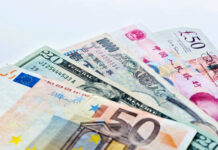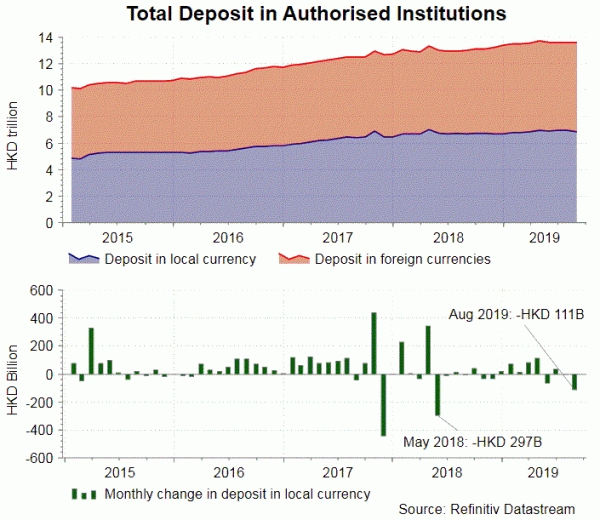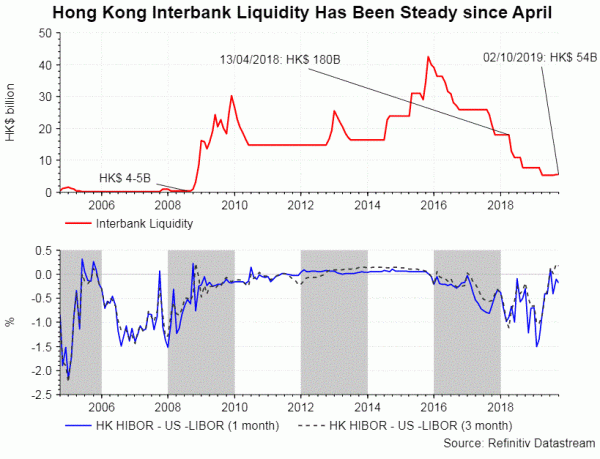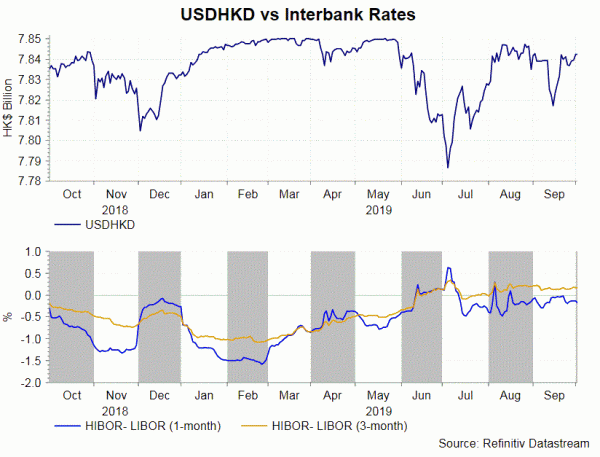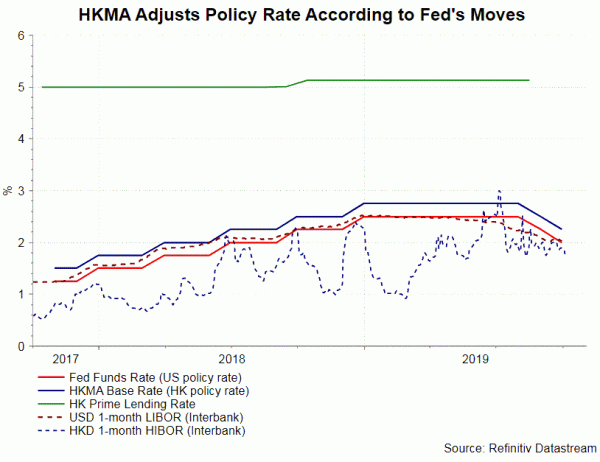As the anti-extradition protests enter the fourth month, the market is increasingly concerned about the liquidity and economic slowdown in Hong Kong. Goldman Sachs’ report has unnerved investors about the financial stability in Hong Kong. However, we believe the worries are exaggerated. Economic slowdown, mainly driven by Chinese economic slowdown and US-China trade war, could intensify despite government’s fiscal stimulus.
Capital Outflow?
Goldman Sachs’ recent report about capital outflow from Hong Kong is overblown. Deposits in local currency (HKD) in authorized institutions dropped -HK$111.08B, or -1.6%, in August, the most severe since May 2018. Meanwhile, foreign currency deposit in Singapore gained S$1.61B in August, followed by a record-high S$3.41B increase in the prior month. Foreign currency deposit in Singapore has gained for 4 months since May. The report estimated that about US$3B to US$4B (HK$ 23-30B) of deposits has flowed from Hong Kong to Singapore over the past few months. It concluded that the direction of capital flow in Hong Kong would remind a hot topic in coming months as the protests continue and China’s economy weakens.
Although deposit in local currency (HKD) slipped, total deposit increased slightly in August. Capital flow in a single month or two should not cause panic, in particular when the change is modest. Meanwhile, there is no single indicator showing the liquidity situation of the territory. Interbank liquidity, the most common gauge of liquidity in the territory, has remained steady since May.
While staying below LIBOR, the spread between one-month HIBOR and LIBOR has narrowed significantly over the past two months. Meanwhile, three-month HIBOR is trading above the corresponding LIBOR. Higher interest rates tend to increase demand for HKD, or at least reduce the incentive of capital outflow.
The last macroeconomic data reveal significant slowdown in Hong Kong’s economy. Retail sales slumped -23% y/y in August, following a -11.5% decline a month ago. The PMI report by Markit/IHS suggests that Hong Kong private sector downturn deepened in August “as escalating trade wars and local political demonstrations dampened demand”. The report added that the territory could fall into “recession in the third quarter as business activity is increasingly aggravated by protest-related paralysis”. It expects GDP could contract at “an annual rate of around 4-4.5%”. Officials and media blame that ongoing protests have driven away tourists who are the major source of retail consumption. They also warn of the risk of recession if the movement continues.
The biggest pillar of Hong Kong’s economy is trading and logistics. Despite on downtrend since China opens up its market, the sector continues to contribute to over 20% of the economy. The major business of the sector is re-export – acting as gateway for mainland Chinese and overseas markets on various kinds merchandises. This sector is severely affected due to US-China trade war. Ironically, tourism (and related retail and catering business) takes up less than 5% of Hong Kong’s GDP. Meanwhile, an overwhelming majority of tourists come from mainland China. It is more prudent to attribute economic downturn in Hong Kong to economic slowdown in China and ongoing trade war.
Measures to Support the Economy
Hong Kong has no autonomous monetary policy as it seeks to peg HKD to USD. Only fiscal measures would be adopted to stimulate the economy. The government has announced a package worth of HK$19B (0.6-0.7% of GDP), in support of companies and household, in August. At 40% of GDP, Hong Kong’s fiscal reserve is ample. However, fiscal stimulus might be insufficient to prevent the economy from falling to recession, given the territory’s over-reliance on Chinese economy.

